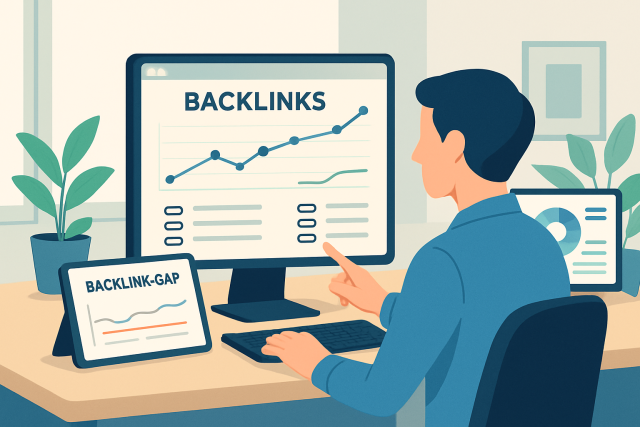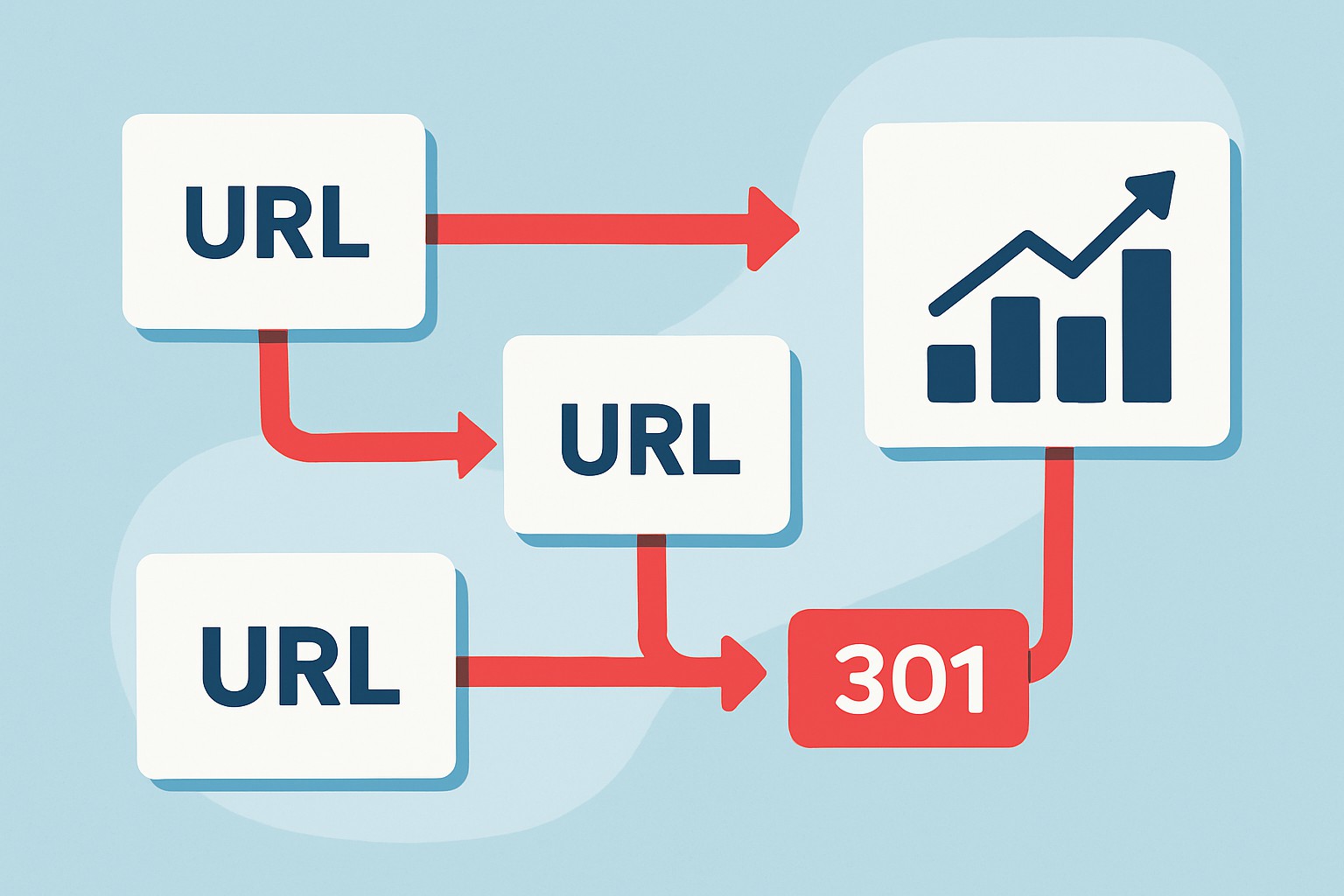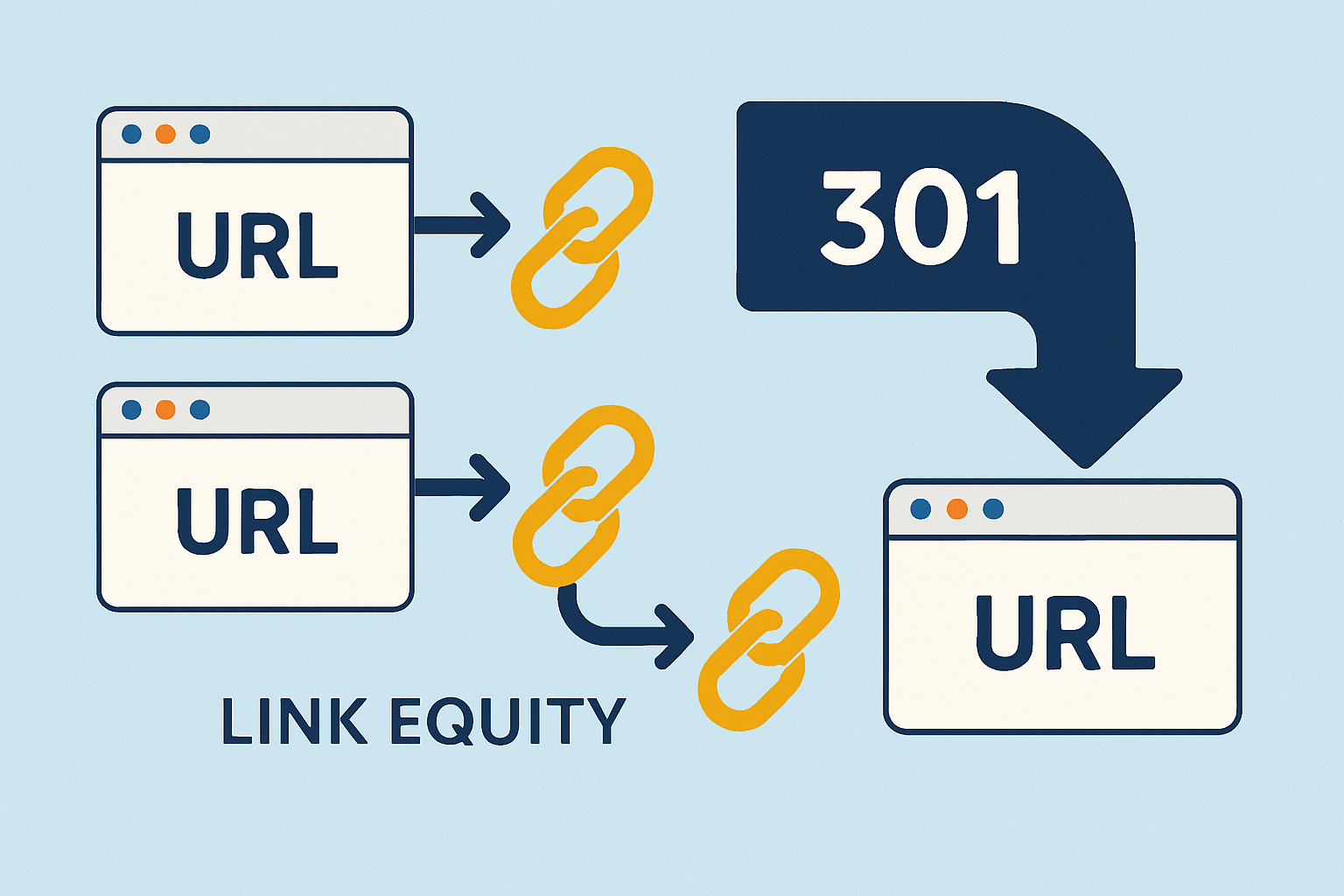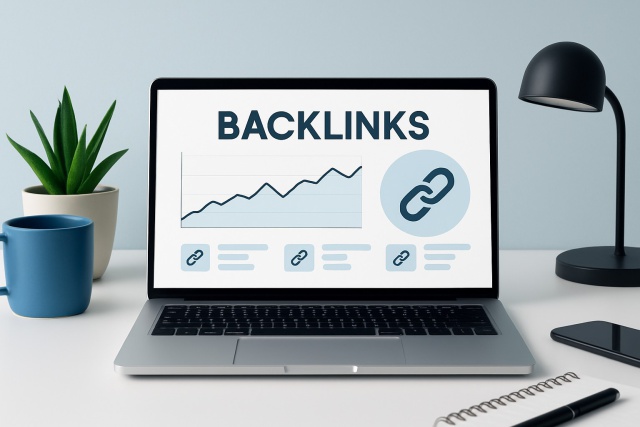
What is the Meaning of Backlink Gap?
Discover what the backlink gap means, why it’s crucial for SEO, and how analyzing it can help you ou...

A 301 redirect backlink is like the unsung hero of SEO quietly doing the heavy lifting by preserving and passing along link equity whenever a webpage makes a permanent move.
A 301 redirect backlink comes from a URL that permanently sends visitors and search engines over to a different URL, signaling that the original page has packed up and moved for good. This nifty little process usually holds on to most of the link authority or "link juice" from the old page, so the SEO value sticks around even after the switch.
When search engines like Google stumble upon a 301 redirect, their crawlers don’t just stop—they follow that redirect like a bloodhound to the new URL and then update their index accordingly. Most of the link equity from backlinks pointing to the original URL usually transfers over to the new page, though it’s worth noting it’s rarely a perfect 100%.
The search engine crawler visits the original URL to examine the content and backlinks.
It spots the 301 status code— the internet's way of saying "This page has packed its bags and moved for good."
Without missing a beat the crawler follows the redirect to the new page bringing most of the ranking signals.
Next the search engine refreshes its index by swapping out the old URL for the new one.
Usually most of the link equity makes the journey but some might slip through depending on how many redirects are in the chain and the site's setup. It’s like passing the baton in a relay race—sometimes the handoff is not perfect.
Many people assume that link equity transfers flawlessly with a 301 redirect. Search engines usually pass along slightly less than the full 100 percent, especially when redirect chains get tangled. Plus, crawlers don’t update their indexes instantly. This can cause your site’s rankings to wobble temporarily after setting up redirects.
Backlinks that pass through 301 redirects still contribute to your site's backlink profile authority but do so in a slightly roundabout way. They usually retain the link value but may cause headaches like diluted link equity or weaker trust signals, especially when redirect chains start to look like a labyrinth.
When multiple backlinks point to outdated URLs that redirect through a long winding chain before landing on your current page, the overall link value tends to take a hit. You might notice ranking improvements crawl along at a snail's pace. Redirect loops where URLs keep bouncing back and forth like a game of ping-pong often cause crawlers to give those links the cold shoulder. This is not doing your backlink profile any favors.

Visual explanation of how 301 redirect backlinks transfer link equity through redirect chains to the destination URL.
301 redirect backlinks usually shine in specific SEO scenarios. Knowing when to use them or when to give them a wide berth can really save your site's link juice and keep you clear of any pesky penalties.
Redirects play a important role in keeping your hard-earned backlink authority intact as URLs exit and new ones take the stage when moving a website or switching domains.
They’re perfect for merging similar or duplicate pages and funneling all that link juice into one stronger, more focused page.
Redirects can also rescue lost link value by steering visitors from broken or vanished pages to relevant active ones so you’re not leaving any SEO treasure behind.
After snapping up expired domains, redirects let you channel old backlinks straight to your current site and make those forgotten links work overtime.
They help tidy up outdated or irrelevant content by guiding users from legacy URLs to fresher, more useful pages.
When a company goes through a rebrand and switches up its domain, using 301 redirects is a clever way to hold onto those hard-earned backlinks and steer clear of any nasty drops in rankings. Redirecting expired domains that don’t have anything to do with your site just to snag backlinks can definitely raise some eyebrows with search engines.
To squeeze the most SEO juice and dodge hiccups from 301 redirect backlinks it is smart to stick to a few key best practices. Keep redirect chains short, regularly audit your backlinks, and double-check that redirects are properly set up on the server side.
SEO platforms like Semrush and Moz come packed with robust backlink tracking and site audit features that make it easy to spot and report redirect backlinks lurking in your link profile. Keeping these tools in your regular rotation helps you tidy up redirects and nip any pesky chains in the bud while boosting how your link equity flows.
301 redirect backlinks are a pretty common SEO tactic, but they’re often misunderstood—kind of like that mysterious relative at family gatherings. Some individuals believe they wipe out all link equity, while others swear they have zero impact on SEO no matter how you use them.
A 301 redirect is kind of like permanently forwarding your mail to a new address. Most of the time, your letters arrive without a hitch, but if you end up forwarding them more than once, things can get a bit sluggish—and sometimes, a few might go missing in the shuffle.
To really understand how 301 redirect backlinks affect your link profile, it’s a good idea to roll up your sleeves and dive into a thorough audit using SEO tools. Watching for redirected links and assessing their quality can do wonders for keeping your backlink profile clean and solid.
Start exporting your backlink data from trusty tools like Moz or Semrush so you get the full scoop without missing a beat.
Next up, filter those backlinks to spot the ones pointing to URLs throwing a 301 redirect your way.
Take a close look at how long and tangled those redirect chains are for these backlinks. Sometimes they’re more like a maze than a straightforward path.
Assess the authority and relevance of the original sources linking to those redirected URLs because not all links are created equal and context matters.
Weigh your options carefully. Maybe you’ll ask for direct backlinks to the final URLs, consider ditching redirects that feel shady, or simply tidy up how the redirects themselves are set up. It’s all about picking the smoothest route forward.
Using this data alongside outreach efforts can really give lost link value a second wind by nudging webmasters to update links with a 301 redirect backlink to the final URL.
16 articles published
Having pioneered innovative social media strategies, Mariam El-Khatib is an authority on leveraging online communities and influencer networks to amplify brand reach and engagement.
Read Pages
Discover what the backlink gap means, why it’s crucial for SEO, and how analyzing it can help you ou...
Master backlink tracking and analysis to improve your website’s SEO. This practical guide simplifies...

Discover how to maintain a healthy backlink profile using effective analysis techniques with Mangool...

Confused by SEM, SEO, and SEA? This clear guide breaks down each concept, showing how they work toge...